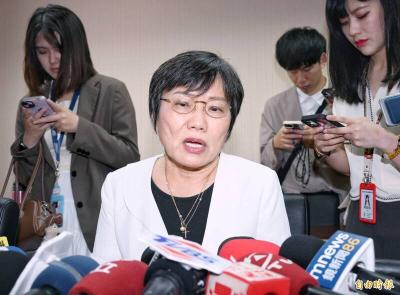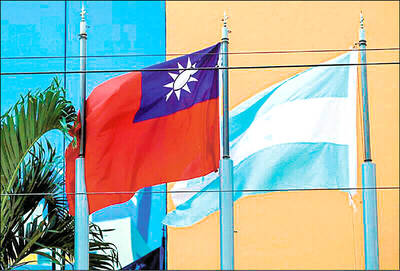Environmentalists yesterday blasted the Taipei City Government’s decision to go ahead with the construction of the Beitou Gondola, accusing the government of placing political interests above public safety.
The activists accused Taipei Mayor Hau Lung-bin (郝龍斌) of either tampering with figures to avoid an environmental impact assessment (EIA) for the Beitou Gondola or having a poor knowledge of EIA regulations.
“The Beitou Gondola will have every problem that the Maokong one has — and many more,” said Lynn Lin (林子凌), secretary-general of the Wild at Heart Legal Defense Association.
Despite mounting concerns over the Maokong Gondola’s safety, “the Taipei City Government has autocratically decided to go ahead with the Beitou project,” Lin said.
The city government is fully aware that the Beitou Gondola will be built on sensitive areas that are prone to landslides — from the foot of Yangmingshan to the top of the national park — as park authorities have highlighted the risks before, Lin said.
“This is placing political interests before people’s lives, [not to mention] a blatant waste of taxpayer’s money and damage to the environment,” she said.
Lin said this was a case of history repeating itself.
The city government commissioned the Industrial Technology Research Institute (ITRI) in 2000 to 2002 to inspect the areas in Muzha (木柵) prior to the construction of the Maokong Gondola and received a report showing that not only was the area sensitive and prone to landslides, the Hsindian Fault runs through the area.
“However, the city still went ahead with the construction,” she said.
Green Party Taiwan Secretary-General Pan Han-shen (潘翰聲), who was also present at the press conference, said: “A wrong political decision is more severe than embezzlement, it poses an even larger risk to the public.”
Showing reporters a graph that ITRI had made, Lin said: “You don’t have to be an expert to know that this is dangerous.”
Lin also accused the city of dodging an EIA for the Beitou project like it did for Maokong, adding that Hau was a “co-conspirator in fraud.”
“EIA regulations state that development projects of more than 10 hectares have to go through an EIA, but in the proposal, the city states that the Beitou Gondola would cover only 9.5 hectares,” she said. “This is a case of document fraud, as according to EIA regulations, the development area should be calculated based on the area of the construction base.”
In the document the city tallied up the area of the construction base of three out of four stations, as well as the area where the cable would pass. However, it used the building area of the station at the foot of the mountain for calculations instead of the construction base area, she said, adding that this was a clear violation of the EIA law and evidence the city was trying to avoid an EIA.
“Whereas the construction base area is 3.9 hectares, the building is only 500m² ... The actual area of the Beitou project should then be well over 12 hectares,” she said.
“This document was sent to and approved by Hau, who was then the Environmental Protection Administration minister,” Lin said.
“If the project was truly 9.5 hectares, why should the city even bother informing the EPA? By approving it, Hau is either in on it with them, or not knowledgeable about EIA regulations,” she said.

Chinese Nationalist Party (KMT) Chairman Eric Chu (朱立倫), spokeswoman Yang Chih-yu (楊智伃) and Legislator Hsieh Lung-chieh (謝龍介) would be summoned by police for questioning for leading an illegal assembly on Thursday evening last week, Minister of the Interior Liu Shyh-fang (劉世芳) said today. The three KMT officials led an assembly outside the Taipei City Prosecutors’ Office, a restricted area where public assembly is not allowed, protesting the questioning of several KMT staff and searches of KMT headquarters and offices in a recall petition forgery case. Chu, Yang and Hsieh are all suspected of contravening the Assembly and Parade Act (集會遊行法) by holding

PRAISE: Japanese visitor Takashi Kubota said the Taiwanese temple architecture images showcased in the AI Art Gallery were the most impressive displays he saw Taiwan does not have an official pavilion at the World Expo in Osaka, Japan, because of its diplomatic predicament, but the government-backed Tech World pavilion is drawing interest with its unique recreations of works by Taiwanese artists. The pavilion features an artificial intelligence (AI)-based art gallery showcasing works of famous Taiwanese artists from the Japanese colonial period using innovative technologies. Among its main simulated displays are Eastern gouache paintings by Chen Chin (陳進), Lin Yu-shan (林玉山) and Kuo Hsueh-hu (郭雪湖), who were the three young Taiwanese painters selected for the East Asian Painting exhibition in 1927. Gouache is a water-based

Taiwan would welcome the return of Honduras as a diplomatic ally if its next president decides to make such a move, Minister of Foreign Affairs Lin Chia-lung (林佳龍) said yesterday. “Of course, we would welcome Honduras if they want to restore diplomatic ties with Taiwan after their elections,” Lin said at a meeting of the legislature’s Foreign Affairs and National Defense Committee, when asked to comment on statements made by two of the three Honduran presidential candidates during the presidential campaign in the Central American country. Taiwan is paying close attention to the region as a whole in the wake of a

OFF-TARGET: More than 30,000 participants were expected to take part in the Games next month, but only 6,550 foreign and 19,400 Taiwanese athletes have registered Taipei city councilors yesterday blasted the organizers of next month’s World Masters Games over sudden timetable and venue changes, which they said have caused thousands of participants to back out of the international sporting event, among other organizational issues. They also cited visa delays and political interference by China as reasons many foreign athletes are requesting refunds for the event, to be held from May 17 to 30. Jointly organized by the Taipei and New Taipei City governments, the games have been rocked by numerous controversies since preparations began in 2020. Taipei City Councilor Lin Yen-feng (林延鳳) said yesterday that new measures by